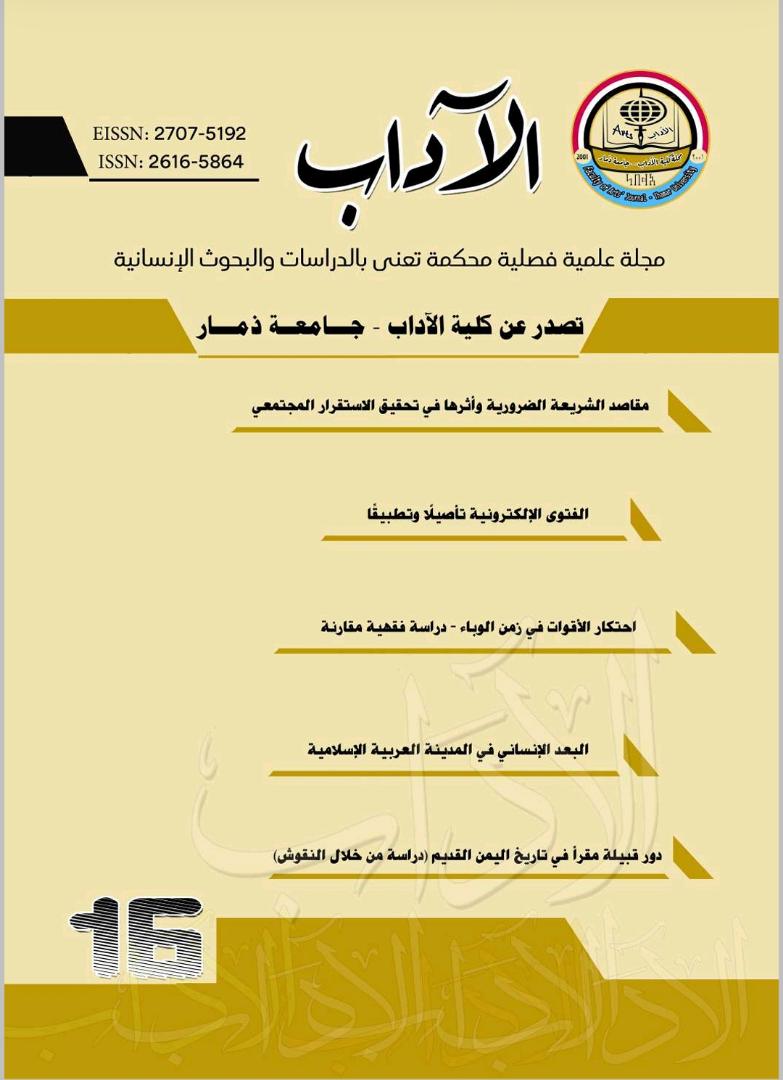Describing the Population Tribes on the Southwestern Coast of the Red Sea as Mentioned in the Writings of Greece and the Romans during the Period (250 BC - 300 AD)
DOI:
https://doi.org/10.35696/.v1i16.674Keywords:
Description of Tribes, South Coast, The Red Sea, The writings of Greece and the RomansAbstract
This research aims at describing the tribes inhabiting on the southwest coast of the Red Sea as it was mentioned in the writings of the Greeks and Romans, during the period (250 BC - 300 AD). They depended in their description and classification of these tribes on the basic food that each tribe relied on in its daily life or the methods used by those tribes in obtaining food, or the trades and jobs practiced by those tribes. The research is divided into: an introduction and four sections; the Greek and Roman writers’ interest in the Red Sea, the description of the inhabitants lived in the southwestern coast of the Red Sea as it was mentioned by the Greek and Roman writers, some customs and traditions of the inhabitants there and the inhabitants work in trades. The research has stated a number of results notably: the tribes of the population on the southwestern coast of the Red Sea did not have specific names, but rather described by the Greeks and Romans depending on the basic of food these tribes relied on, their way of life, and the trades and jobs, and its customs and traditions.Downloads
Download data is not yet available.
Downloads
Published
2020-09-01
How to Cite
Al-Abbadi, A. S. . (2020). Describing the Population Tribes on the Southwestern Coast of the Red Sea as Mentioned in the Writings of Greece and the Romans during the Period (250 BC - 300 AD). Journal of Arts, 1(16), 447–465. https://doi.org/10.35696/.v1i16.674
Issue
Section
1
License
Copyright (c) 2021 أحمد صالح العبادي (مؤلف)

This work is licensed under a Creative Commons Attribution 4.0 International License.
Copyright and Licensing
For all articles published in journal, copyright is retained by the authors. Articles are licensed under an open access Creative Commons CC BY 4.0 license, meaning that anyone may download and read the paper for free. In addition, the article may be reused and quoted provided that the original published version is cited. These conditions allow for maximum use and exposure of the work.



